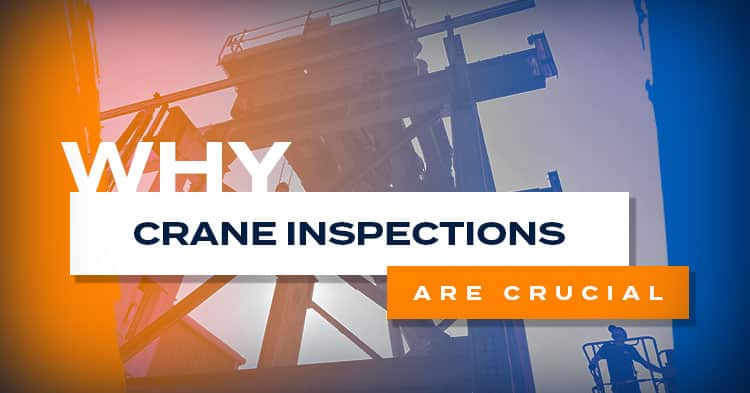Safety is a main concern on any job site. At American Crane & Equipment Corporation, we understand the importance of maintaining the highest safety standards to protect your team and equipment. According to the Occupational Health and Safety Administration (OSHA), the Crane Manufacturers Association of America (CMAA) and the American Society of Mechanical Engineers (ASME), regular crane inspections and maintenance are essential to prevent worksite accidents and ensure optimal performance. Keep reading to find out why crane inspections are so crucial.
Industrial cranes are indispensable for lifting heavy loads, but over time they can suffer from wear and tear, increasing the risk of breakdowns and accidents. To mitigate these risks, OSHA has established comprehensive inspection requirements for cranes under standard 1910.179. These inspections are designed to identify potential issues before they escalate, ensuring both the safety of your workers and the longevity of your equipment.
Types of Crane Inspections
OSHA outlines two main types of crane inspections: frequent and periodic. Each type of inspection serves a specific purpose and follows a different schedule.
Frequent Inspections
Frequent Inspections are conducted daily to monthly, depending on the crane’s usage and operational environment. These inspections focus on critical components that are prone to rapid deterioration or frequent use. Key items on the checklist for frequent inspections include:
- Maladjustments affecting the crane’s operation
- Deterioration or leaks in hydraulic systems, pumps, lines, valves, or tanks
- Deformed or cracked hooks
- Defective hoist chains
- Faulty wire rope reeving systems
- Excessive wear of components
Periodic Inspections
Periodic inspections occur at regular intervals throughout the year, typically monthly to quarterly. These inspections are more thorough and cover components that are less likely to fail suddenly but require regular monitoring. The checklist for periodic inspections includes:
- Worn tires
- Deterioration of chain drive sprockets
- Faulty or unsafe power plants
- Wear on brake and clutch systems
- Loose bearings or rivets
- Deterioration in electrical apparatus, including limit switches, push-button stations, and controller contractors
- Overstretched chains
- Inaccuracy in indicators
- Distorted bearings
American Crane’s Inspection Services
At American Crane, we offer comprehensive crane inspection services to ensure your equipment meets all OSHA standards and regulations. Our certified technicians perform both frequent and periodic inspections, providing detailed reports and recommendations to keep your cranes in top condition.
By partnering with us, you can be confident that your equipment will operate safely and efficiently, minimizing downtime and enhancing productivity. Our service and parts department is equipped to handle all aspects of crane maintenance, ensuring complete compliance with current safety codes.
At American Crane, we are your expert, craftsman, and partner in ensuring the safety and reliability of your material handling equipment. For more information on our crane inspection services or to request a quote, please contact us today.


